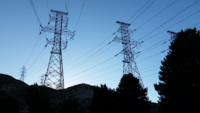
Photo from wikipedia
Driven by the rapid growth of Internet of Things applications, tremendous data need to be collected by sensors and uploaded to the servers for further process. As a promising solution,… Click to show full abstract
Driven by the rapid growth of Internet of Things applications, tremendous data need to be collected by sensors and uploaded to the servers for further process. As a promising solution, mobile crowd sensing (MCS) enables controllable sensing and transmission processes of multiple types of data in a single device. Despite the appealing advantages, existing works on MCS have mostly simplified two design issues, namely joint control of sensing and transmission processes and corresponding energy consumption. To address the above issues, a single-user MCS system is considered with a typical MCS device sensing and transmitting data to a server in a given time duration. In particular, there exists a busy time interval when the device is incapable of sensing. To minimize the sensing-and-transmission energy consumption of the device, an optimization problem is formulated, where the sensing and transmission rates are jointly optimized over time subjecting to the constraints on the sensing data sizes, transmission data sizes, data casualty, and busy time of sensing. This problem is highly challenging due to the coupling between the rates as well as the existence of the busy time. To deal with this problem, we first show that it can be equivalently decomposed into two subproblems, corresponding to a search for the amount of data size that needs to be sensed before the busy time (referred to as the height), as well as the control of sensing and transmission rates given the height. Next, we show that the latter problem can be efficiently solved by using the classical string-pulling method, while an efficient algorithm is proposed to progressively find the optimal height without the exhaustive search. Moreover, the solution approach is extended to a more complex scenario where there is a finite-size buffer at the server for receiving data. Last, simulations are conducted to evaluate the performance of the proposed designs.
Journal Title: IEEE Transactions on Wireless Communications
Year Published: 2022
Link to full text (if available)
Share on Social Media: Sign Up to like & get
recommendations!